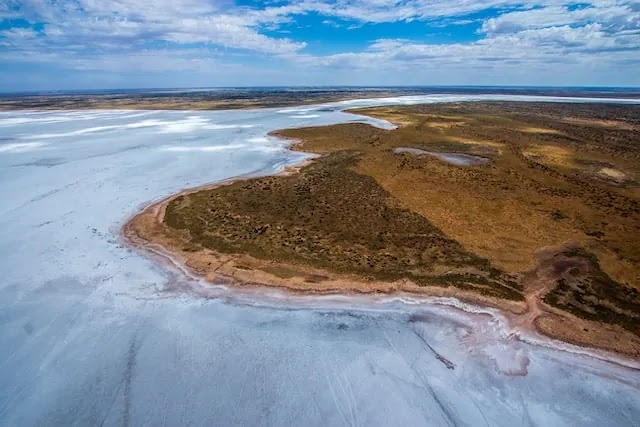Gibson Desert Nature Reserve is an 18,900-square-kilometer nature reserve. The location of this place is in midwestern Australia. This nature conservation area is remote and rarely visited by tourists.
It is beautiful, and anyone in the world will find something special in this remote place. Its location is in the arid regions of Australia. The landscape features of the reserve include dunes and plains.

It also has rock mesa-shaped hills and unstable laterite plains. The dominant plants are spinifex which is less shrubby and mixed with trees.
In 2020, the Western Australian Government signed an agreement with the people. They named this area Pila Nature Reserve.
The traditional owners become a part of managing the Gibson Desert Nature Reserve. The Department of Biodiversity Conservation and Attraction and the people work together.
Gibson Desert Nature Reserve
The vast pebbles, red sand plains, and hills of this wilderness are home to many diverse reptiles. Here one can find yellow and brown striped snakes and the thorny devil.
One can also find the desert skink and the blue-tongued skink. Red kangaroos, ostrich-like emus, and long-eared bilberries are some of the large animals.
They can survive in the scorching heat and lack of water. Rocky deserts, ravines, rare marshes, and gnamma water pools provide shelter for wildlife.
The location of this wilderness is between Capricorn and Lake Disappointment. This great wilderness is on the east side of the Little Sandy Desert.
The Great Sandy Desert is in the southern part of this place. The Great Victoria Desert is in the north. Its elevation is higher than 500 meters in some spots.
Explorer Ernest Giles named this great wilderness after a member of his party, Alfred Gibson. During an expedition in 1874, Alfred Gibson lost and presumably died in this harsh land.
Giles, who crossed the region in 1876, avoided a similar fate. He avoided the same fate by depending on dried horse meat and limited water supplies.
Early explorers such as Ernest Giles noticed that much of the land was a vast expanse of gravel. It is home to the lush desert grasses, the vast plains of red sand, the hilly terrain, and the dunes.
Low rocky cliffs and ample laterite in the upland soils are unique features of this wilderness. The sandy soils of the laterite plains are rich in iron.

The water in the soil remains low due to low rainfall, and most of the area is gravel and sandy. The environment is very harsh in this unique land. But some magnificent desert plants and animals can be visible.
The plants here are small in size and bushy. It is because they can withstand wind and sand. Animals are usually nocturnal, surviving on low water intake and storing water.
There was a connection in this place, joined with several isolated saltwater lakes. And several smaller lakes in the southwest through the drainage system.
Groundwater sources here include parts of the Officer Basin and the Canning Basin. It receives an annual rainfall of 200 to 250 millimeters. It happens with an evaporation rate of about 3,600 millimeters.
The climate here remains generally warm. In summer, the temperature can rise above 40 ° Celsius (104 ° Fahrenheit). It can be 18 ° Celsius (64 ° Fahrenheit) in winter.
It drops to 6° Celsius (43 ° Fahrenheit) at night. People living in most parts of this wilderness are Indigenous Australians. During the severe drought of 1984, the land reservoirs dried up.
As a result, people saw a shortage of necessary food. The most populated areas east of Gibson are Warburton, Mantamaru, and Warakurna. Many of the people in these areas are of European descent.
A group of the Pintupi people used to live in the area with a traditional semi-nomadic life. These people walked out of a remote wilderness in the central-eastern part of the Gibson.
They made contact for the first time with mainstream Australian society. Many believe this group of people was the last uncontacted tribe in Australia.
Conclusion
There are many things to know and see in this magnificent wilderness area of Australia. Many animals live in this majestic wilderness. If you visit the Gibson Desert, you will see its diversity.
Many people in Australia love to visit this wilderness though it is a very rough place. Many indigenous people of Australia were natives of this great wilderness.
If you love adventure, you can visit this place. This place has many things to offer to adventure-loving people. So you can go to see this great wilderness without any hesitation.